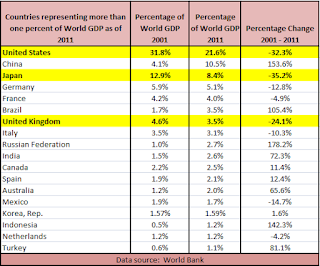"Half of Google's revenue comes from selling text-based ads that are placed near search results and are related to the topic of the search. Another half of its revenues come from licensing its search technology to companies like Yahoo."----- Eric Schmidt, CEO of Google.
"Global dynamics" refers to the interconnected and constantly evolving interactions, relationships, and forces that shape the world on a global scale. These dynamics encompass a wide range of political, economic, social, environmental, and technological factors that influence the behavior and outcomes of countries, regions, and international actors. Here are some key aspects of global dynamics:
Geopolitical Shifts:
Global dynamics are influenced by geopolitical shifts, including changes in power dynamics, alliances, and rivalries among nations. Factors such as territorial disputes, military conflicts, and diplomatic relations shape the geopolitical landscape and influence global stability and security.
Economic Interdependence:
Economic globalization has led to increased interdependence among countries, with economic activities, trade flows, investment patterns, and supply chains spanning across borders. Global economic dynamics are shaped by factors such as economic growth, trade agreements, monetary policies, financial markets, and international trade tensions.
United States is still leading the global market in innovation and hence home country to the worlds most valuable companies.
Lets look at some interesting results.
Apple 2011 financial results:
$108.25 billion in sales
$25.92 billion in profits
Microsoft 2011 financial results:
$69.94 billion in sales
$23.15 billion in profits
Google 2011 financial results:
$37.9 billion in sales
$11.7 billion in profits
These companies were started by ordinary people who discovered their purpose /passion early. Even without college degrees, they built global brands.
However, the global dynamics is changing;
The USA's share of World Gross Domestic Product has dropped from
31.8% in 2001 to just 21.6% (a drop of -32.3%) in 2011, while China's
share of global GDP grew by 153.6% in the same period.
Japan experienced a -35.2% drop and the UK lost -24.1%, while India
(+72%), Turkey (+81%), Brazil (+105%), Russia (+178%), and Australia
(+65.6%) saw their economies grow significantly in that period.
Global dynamics is inevitable, but it does not have to be at cost to the western world. A model that empowers and challenges every human resource in western nations must be found.
let's look at some stories in the entertainment industry…
Bill Cosby shined shoes and sold produce when he was young.
Danny DeVito was a formally trained hair stylist .
Michael Douglas once worked as a gas station attendant.
Tom Hanks once worked as a hotel bellman and carried bags for a number of celebs.
Dan Akroyd was a mail sorter for Canada's national postal service.
Jennifer Aniston was both a telemarketer and waitress.
Alec Baldwin was once a bouncer.
Halle Berry worked at Higbee's Department store in the children's department.
Sandra Bullock worked as a bartender.
Simon Cowell was a mailroom clerk for EMI Music Publishing where his father worked.
Apple 2011 financial results:
$108.25 billion in sales
$25.92 billion in profits
Microsoft 2011 financial results:
$69.94 billion in sales
$23.15 billion in profits
Google 2011 financial results:
$37.9 billion in sales
$11.7 billion in profits
These companies were started by ordinary people who discovered their purpose /passion early. Even without college degrees, they built global brands.
However, the global dynamics is changing;
The USA's share of World Gross Domestic Product has dropped from
31.8% in 2001 to just 21.6% (a drop of -32.3%) in 2011, while China's
share of global GDP grew by 153.6% in the same period.
Japan experienced a -35.2% drop and the UK lost -24.1%, while India
(+72%), Turkey (+81%), Brazil (+105%), Russia (+178%), and Australia
(+65.6%) saw their economies grow significantly in that period.
Global dynamics is inevitable, but it does not have to be at cost to the western world. A model that empowers and challenges every human resource in western nations must be found.
let's look at some stories in the entertainment industry…
Bill Cosby shined shoes and sold produce when he was young.
Danny DeVito was a formally trained hair stylist .
Michael Douglas once worked as a gas station attendant.
Tom Hanks once worked as a hotel bellman and carried bags for a number of celebs.
Dan Akroyd was a mail sorter for Canada's national postal service.
Jennifer Aniston was both a telemarketer and waitress.
Alec Baldwin was once a bouncer.
Halle Berry worked at Higbee's Department store in the children's department.
Sandra Bullock worked as a bartender.
Simon Cowell was a mailroom clerk for EMI Music Publishing where his father worked.
Understanding and navigating global dynamics require a multidisciplinary approach, strategic foresight, and collaboration among governments, businesses, civil society organizations, and individuals to address complex challenges, seize opportunities, and build a more sustainable and equitable world. By recognizing the interconnectedness of global dynamics and working together to promote cooperation and solidarity, stakeholders can contribute to positive outcomes and shared prosperity in an increasingly interconnected and interdependent world.
Every human resource that discovers his purpose in life is a global asset...............
Every human resource that discovers his purpose in life is a global asset...............
See You at The Top

